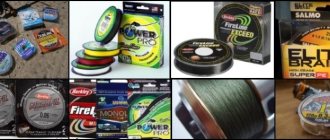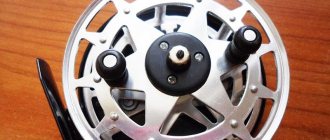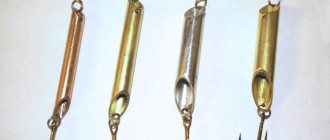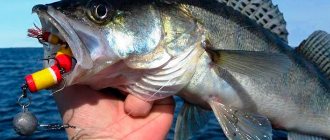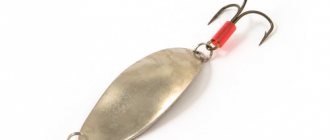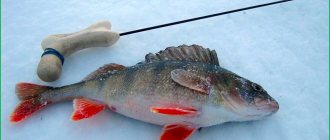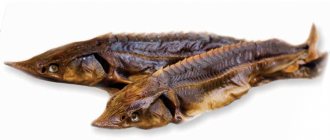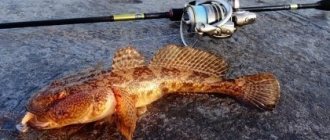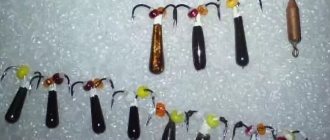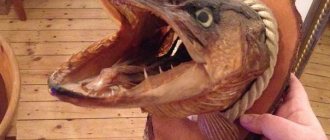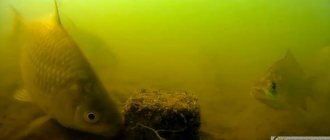The right lures for ultralight are an important link in building a UL spinning tackle. This is the final part of the equipment for which the rod, reel, and cord are sharpened and tuned. Compared to conventional spinning baits, ultralight ones are much smaller and lighter. They can catch not only predators, but also peaceful fish. Such features impose certain design requirements when using lures for ultralight spinning rods.
Ultralight spinning
The terms ultralight, micro, nano jig reflect the smallest caliber of spinning tackle. This allows the use of the smallest, lightest equipment. The set of ultralight baits, in addition to the standard ones, includes all the small things that can only be used with a bombard on a regular spinning rod. However, when catching small, cautious fish, bombards and rough spinning rods do not provide full contact with the equipment.
In urban areas where there are few fish, ultralight spinning is necessary. It is becoming increasingly difficult to find large fish in clogged city rivers and ponds. But you can always find small perch, pike or rudd. Ultralight also works in fishing areas. Here fishermen love it for its lightness, convenience, and thrill when fighting large fish.
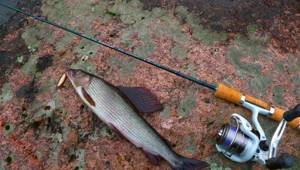
Spinning ultralight. We complete the tackle
At ultralight. Ultra-light tackle. These words are heard more and more often from spinners. Such ultralight lovers are easy to recognize on the shore of a reservoir, fishing with elegant gear in hard-to-reach places. What is so interesting about this tackle? What is it about it that, having fished with it once, the tackle is added to the fisherman’s main arsenal.
With pinning, ultralight gives anglers significantly more chances to catch fish compared to classic spinning rods, since micro-baits are used when fishing, which are interesting not only for small but also for large fish. And of course, this tackle gives a special feeling when fighting caught fish, due to its miniature size and sensitivity. If you know how to handle this gear, then the size of the catch will be no less, or even more, than with a regular spinning rod, feeder or float rod!
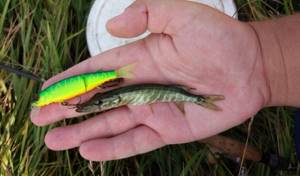
1. RODS
discussions and debates about which rod to call ultralight. Some fishermen believe that the top test should be no more than 5 - 6 grams, others believe 10 - 12 grams. But those who believe that everything depends on the body of water where you are going to fish are right. For example, if you fish in a fast current, then 10 - 12 grams will not be enough, rods with a small test simply sag and stop working! And if on calm water, then 5 - 6 grams will be just right.
That ’s why manufacturers divide ultralight fishing rods into several groups. Super light - with dough from tenths to 5 - 6 grams , and more powerful - with dough up to 10 - 12 grams , but also ultralight. Naturally, very high demands are placed on ultralight rods. They must have very high sensitivity, throw well, must have high quality blanks and fittings, and, of course, be impeccably assembled. Such stringent requirements are due to the fact that, although fishing is done with miniature baits, bites from relatively large fish occur quite often. And any imperfection made during the design or manufacture of a fishing rod in the fight against large fish will lead to its annoying breakdown. Therefore, despite its elegance, the rod must have a high margin of safety.
The length of ultralight rods can also vary from 1.5 to 2.7 meters. Again, it all depends on the specific fishing conditions and reservoir. If you are fishing in a small or heavily overgrown reservoir, then of course it is better to choose a short rod of 1.5-1.8 meters, since in such reservoirs you will still have to enter. But if the coast allows, then the advantages of a longer spinning rod will be obvious. And yet, the most common rod length can still be called 1.8 - 2.1 meters . Such rods are suitable not only for fishing on streams or small rivers, but also on large bodies of water.
C of a rod is one of the main characteristics of an ultralight rod, which determines how the rod bends under load:
- Extra Fast action - the rod bends in the upper quarter . This gives a worse casting range, but high sensitivity.
- Fast action - the rod bends in the upper third. Low casting range, but good sensitivity.
- Medium action - the rod bends to the middle. Average casting distance, average sensitivity.
- Soft or slow (Slow) action - the rod bends almost to the handle. Longest cast, but low sensitivity.
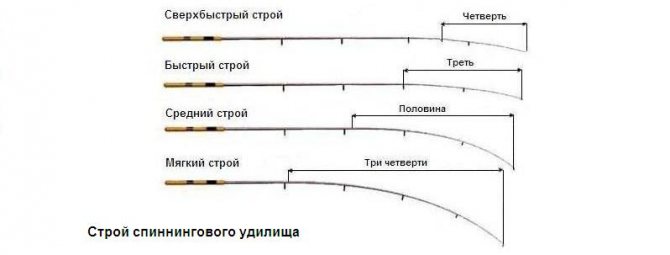
The most popular rods for ultralight are “medium” or intermediate – “medium-fast” action. They throw quite well, have high sensitivity and are suitable for fishing with both wobblers and micro-spinners. Such rods are not only sensitive, but also absorb fish jerks well. Slower rods cast better, but the accuracy of casting with such a rod decreases. Very “fast” - they have high sensitivity, but it is difficult to make long-distance casting with a light bait with such a rod. Although casting range for an ultralight rod is not an end in itself, nevertheless, a good rod should make it possible to cast a bait weighing 2 grams at least 25 - 30 meters. It is for short distances up to 40 meters that the tackle is intended.
2. REEL
For comfortable fishing with a short and light ultralight spinning rod, of course, it is necessary to properly balance the tackle. This can only be achieved by using the lightest inertia-free spinning reels. In terms of size, as a rule, reels of no more than 1500 units are used, according to the Shimano classification. Reels for ultralight are subject to quite high requirements. This applies to the quality of line winding, the reliability of the clutch, and weight. By installing the reel on the spinning rod, you can check the center of gravity - the closer the center of gravity to the reel leg, the better. For beginners in this gear, you can give several recommended figures:
- Test rod up to 3.5 grams - reel weight up to 160 grams.
- Test rod up to 5.0 grams - reel weight up to 190 grams.
- Test rod up to 7.0 grams - reel weight up to 210 grams.
once again that the figures for the weight of the reel are very arbitrary. Materials and technologies change, and the weight of not only spinning reels, but also fishing rods changes.
bullet , it is lighter and will last for a long time. Metal spools are of course more durable, but also heavier, which is critical for ultralight gear. And the spool must be without defects! We use thin fishing line, and even small burrs can easily damage it. The friction, most often on light reels, is frontal. But convenience depends largely on habit. Although we emphasize that reels with a front clutch are more compact. The main thing is that the clutch is adjusted correctly. This is especially important when jerking fish. On inexpensive reels, the clutch operates with a slight delay, which is enough to break a thin fishing line. It is better if the line guide bracket is thick, it guides the line more accurately.
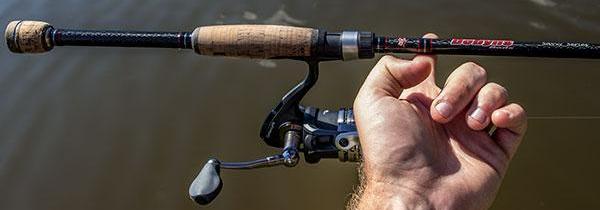
3. LINE
with ultralight baits weighing up to 5 grams. Even the thinnest braided cords have very high strength and significantly exceed the value recommended by rod manufacturers, so the risk of damaging an expensive fishing rod is very high. In addition, when fishing in clear water, any cords, even thin ones, are very noticeable. Many fish, in particular ide and chub, react very negatively to the line, and the number of bites is noticeably reduced. It is much better to use monofilament fishing lines, preferably the softest and highest quality. The diameter is usually between 0.12 and 0.14 mm . Only if the weight of the bait is 10 grams or more can you use very thin braided cords or fishing lines with a diameter of 0.16 mm or even 0.18 mm, but this is already the limit for ultralight.
Read the article: “Choosing braided fishing line. Characteristics. Japanese and European numbering"
4. LURE
- Spoon. Among all the ultralight lures, rotating spoons, popularly known as “micro-spinners,” can be put in first place. These small spinners make up the vast majority of ultralight baits used. They attract fish both visually and by the fairly strong mechanical vibrations created in the water. As a rule, spinners up to No. 1 .
The main advantage of turntables is their accessibility and ability to be used in any conditions. The color of the spoon very much depends on the conditions of the reservoir, and here it is difficult to give any universal recommendations. It is believed that the most universal petal color is pure white or white with red spots . Often this is true, but sometimes, oddly enough, black micro-pinwheels work best. They, of course, do not look anything like fry, but perhaps the fish mistakes them for some other food object, or the reflex is triggered to grab everything small that moves in its field of vision. Peaceful fish, namely rudd, roach, and even bleak, are quite successfully caught size zero spinners The shape of the spoon's petal is chosen depending on the current. Narrow for fast currents, round for calm water. But oscillating spoons are used much less often.
- Wobblers. When fishing with ultralight, for the most part, wobblers with a depth of 1.0 - 1.5 meters . The size of baits usually does not exceed 2 - 3 cm , and the weight is 2 - 3 grams . Wobblers can be any kind, floating, suspenders, sinking, but always with a small blade. It is this blade that gives the wobbler its own play, balance and depth. Sinking models are preferable. They are very effective when fishing on streams. The current does not allow the bait to sink to the bottom even during a pause, and it remains at a certain horizon, continuing to play. Floating wobblers are used mainly where there is a lot of grass or where snags are possible on the bottom. Accordingly, the wiring when fishing with ultralight depends on the type of wobbler.
- Silicone baits. This is where the manufacturers' imagination runs wild. And you won’t find silicone baits in any shape. And yet, the most common for ultralight fishing are twisters, or rather microtwisters. Small offset hooks are excellent for attaching them, the sizes of which depend on the size of the microtwister. When fishing for pike, 5-7 cm rubber baits are often used. The advantages of silicone are its softness, unique play, and of course affordability. But, do not forget to store silicone baits separately from other baits, from each other, and in special boxes. They get really colored and melt from the silicone fumes.
Read the article: “Twister and vibrotail. The baits are simple, inexpensive and catchy"
5. PLACES AND FISHES

By definition, ultralight gear itself does not involve fishing on large rivers. It is optimal for small rivers, streams, coastal zones - all those places that are quite difficult to fish with powerful rods with heavy baits. Thin tackle is required here; it is convenient to make your way along the overgrown banks of small rivers. Some fishermen do not pay attention to small rivers and streams, not even assuming that they can catch “serious” fish. But in vain! It is on such small rivers that fish hang in the summer, and often not small ones. She comes here in the spring, and lives here all summer, since these rivers have an abundant food supply, especially those that flow through forests. These are the ones that are of main interest to ultralight lovers.
Fish , and not only predatory fish, can be successfully caught in the summer using micro-baits throughout the day. When catching chubs and ides, micro baits are much more effective than conventional spinning baits. The advantages of ultralight include the fact that it can be used to catch not only predators. Ultralight also turns out to be indispensable in so-called “difficult” reservoirs, where there are predatory fish, but they cannot be seduced by any bait. This situation is often observed on flood lakes connected to rivers. These lakes, as a rule, are difficult to access and become heavily overgrown in summer, but are very rich in fish. The predator here is very picky. The huge number of fry allows him not to worry about food and completely ignore ordinary baits. This is where micro-baits are out of competition.
Happy fishing!
Lure set for ultralight
The following types of baits are used on light spinning rods:
- Small spoons - spinners, spoons, micro-devons;
- Small wobblers;
- Lures for microjig – silicone, foam fish;
- Flies, streamers, barbs;
- Combinations and homemade products - fly spoons, fly wobblers or handicraft baits that are difficult to classify as any particular type.
The advantage of a light spinning rod is the ability to catch not only predators, but also peaceful fish. Ultralight baits for white fish are the same. Their size allows you to catch crucian carp, carp, saberfish, and other non-predatory fish.
Spoons
The first bait for ultralight spinning is a spinner. Any micro-oscillators, micro-turntables of small sizes and weights are used. Fundamentally, the fishing technique does not differ from conventional spinning. The same uniform movements, stop and go, careful choice of place and fishing horizon.
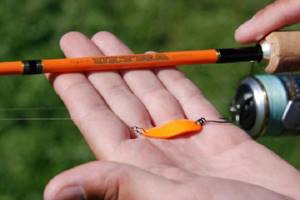
Spinners
Ultralight uses small turntables in sizes 00.0 or one. Sometimes you come across smaller spinners in stores. Lures with both a regular round petal and a long long petal are suitable. In still water, spinners with a blade deflection angle of more than 60 degrees work better. In the current, on the contrary, it is better to start spinners with a slight deviation, less than 30 degrees.
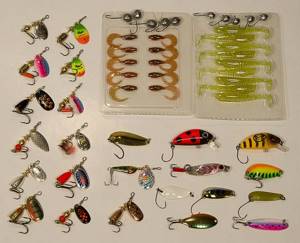
You need to experiment with the colors of the petals, the load, and the speed of the retrieve, depending on the fishing conditions and the preferences of the fish. Lures of standard colors – golden, silver, dark – and multi-colored ones can work. You can use well-known branded products from Mepps, Blue Fox, as well as cheap ones - as long as the petal works stably at the required wiring speed.
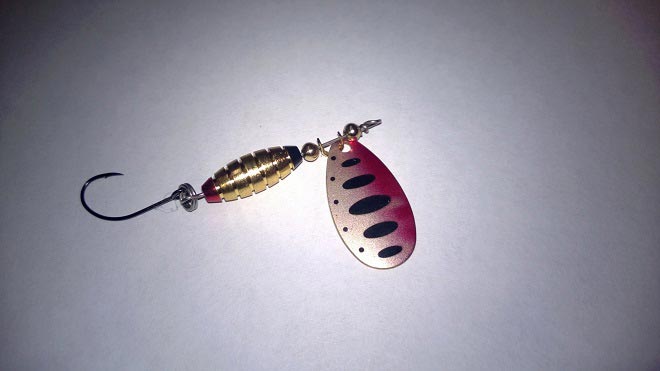
Oscillating spoons
The next large group of baits are micro-oscillators. Both standard models from manufacturers and small homemade ultralight spoons are suitable. Their production is standard - a metal blank of the desired shape and size is cut out according to the pattern. The ball from the bearing is placed and the required recess is created with hammer blows. The difficulty is in the correct size of the workpiece, its configuration, and making the bend. Some fishermen make spoons with their own hands, which are superior in catchability to any factory baits.
- The technique for working with spinners on an ultralight is the same as on a medium spinning rod. Weight and size are selected depending on the test of the rod - usually up to 7 grams. Any predator will take the shallow fish - perch, pike, asp, and also, especially in zhor, sabrefish, chub, large rudd.
- Small castmasters work great, especially when fishing in the upper layers of water in large bodies of water. The prowling movements attract fast asp, saberfish, and chub.
- Micro-oscillators are useful when you need to fish the horizon deeper than 2 meters, which cannot be reached with small spinners or small wobblers. And in the fall this is the main habitat of perch or pike. Here it is important to select the reeling speed and the depth of the initial dive according to the count, so as not to catch the bottom vegetation or snags with the hooks.
Read more about specific models and the correct use of mini spinners and oscillators in the article about spinners for ultralight
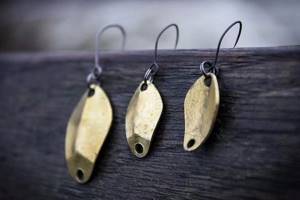
Propellers (turbines)
Beginners usually do not use such baits, using spinners, spoons, and microjigs. However, ultralight can be significantly expanded with baits. For example, Devon spinners in a mini version. Manufacturers do not produce such small Devons. You can’t find a spinner in the size of 0000 or 000 in the store either.
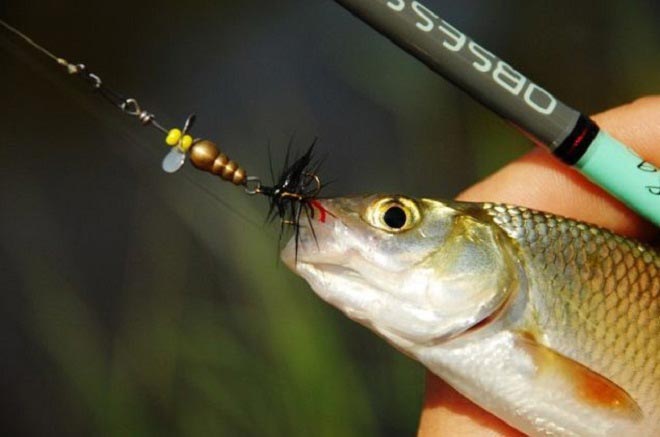
An alternative to such baits for ultralight spinning rods is a homemade turbine, as it is also called, a propeller or turbo. Essentially, this is a micro-Devon, a very small rotating spoon, where instead of one blade, a small metal propeller is attached to the axis.
The main part of the turbine is a metal double blade, which rotates when driven by water pressure. Technically, this bait is Devonian. However, it cannot be found in stores in the size required for ultralight. Therefore, fishermen make it themselves from scrap materials.
The advantage of such a spoon is its small size, only 1-2 cm. You can catch both predatory and aggressive peaceful fish with such an ultralight.
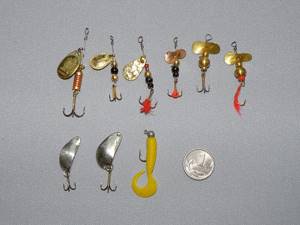
Turbine manufacturing
Materials for a DIY ultralight turbine:
- Steel wire - for making an axle
- A tee of the required size, possibly with an edge made of lurex, thread or feathers.
- Parts for the body of the bait with a hole - metal beads, lead blanks, copper wire (for winding) of the required weight. In total, the bait must correspond in weight to ultralight standards - no more than 5 grams. It is better to prepare several in different weights for different fishing conditions.
- Sheet brass, stainless steel, copper 0.5-1 mm thick for the propeller.
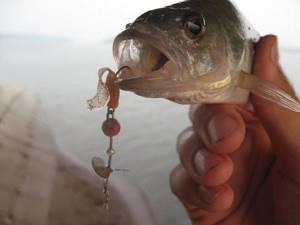
Technically, this bait is a regular spinner. An eye for a tee is bent from wire, a body is mounted on it or wound from copper wire, and a propeller is placed on top. Then we make the top eye for tying to the fishing line.
The main difficulty is to carefully manufacture the propeller itself. The blades of the bait should be symmetrical, the hole should be exactly in the center, the spread and inclination of the petals should be identical. Otherwise, stable, even rotation cannot be achieved.
We cut out a rectangular blank from the sheet, then carefully grind out identical blades from it using a needle file. We drill a hole (or punch) in the middle. Then we polish the blades with goya paste and give them the desired bend to the sides. When it comes to bending, you need to experiment - this comes with experience. The propeller should rotate at the slowest speed of the turbine. The result is a turntable that is much smaller in size than you can find in a store.
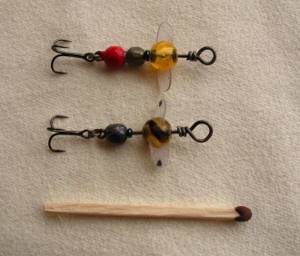
Plastic propeller option
Mepp's Aglia Long 0 (weight – 2.5 g.)
I can say with confidence that this is the best spinner bait I have ever fished with.
And here's what you need to know: Kuusamo Professor is the best spoon for catching lake pike
Pontoon 21 SYNCHRONY 1.5 starts working even on the slowest wiring.
What I like about the performance of Pontoon 21 spinners is the action of the petal. In this series of spinners, as in the one described above, the petal begins to rotate at the slowest retrieve, and this is also in size 0, which is not often found in spinners from other manufacturers.
There is also a fly of high quality. If I need to get away from zero, then most often I use this particular spinner. Perch the size of a little finger greedily attack the Ball Concept 0. But they are also not averse to feasting on small strings, which have already cut off this bait 2 times over the summer, but I always make up for its loss.
Among the wide range of Pontoon 21 Ball Concept 0 you can find a spinner with the desired petal color and fly color. But not everything is as good as it might seem at first.
Ball Concept 0 has stickers on the petal, not paint, and therefore after 3-4 active fishing trips the spoon loses its original appearance. It was with this spoon that in the 2014 season I caught 4 times a very rare fish in my river - ide, which over the past 3 seasons of spinning fishing I managed to catch only a couple of times.
Good old Mepp's Black Fury, probably many fans of fishing with UL spinners have it in their arsenal. More than one generation of anglers has grown up on Mepp's spinners. A good and inexpensive spinner that works great in sunny weather.
The size 0 petal starts well compared to other Mepps, but noticeably worse than the Pontoon 21 Ball Concept 0.
Due to the not very good performance of the petal, I most often use it when catching active fish, on fast retrieves. Perches and small pike respond well to it. I would like to note that it was with this spoon that I managed to catch the first UL roach, this has never happened before, is this a coincidence or an accident? We can only guess.
The spoon will begin to work better on low-active perch if you equip it with a small fly.
Another spinner from Mepp's. One of the few in my arsenal with an elongated petal shape is long. But there must be such things. It is distinguished from spinners with a different petal shape by a smaller angle of rotation of the petal relative to the axis, lower resistance to rotation in the water, which often has a positive effect on the fish’s bite.
Due to less resistance, it can be carried out at a slightly greater depth, which is sometimes very good. Sometimes, in order to make the lure rotate, you need to make a short jerk with the rod; at first it will be uncomfortable, but then it will become a habit.
Wobblers
The next large group of ultralight baits are wobblers. You can use any microcranks, minnows, shads up to 5 cm in size and weighing up to 7 grams. More often, ultralight uses microcranks with one tee 2-4 cm long and weighing 1.5-5 grams.
As with wobblers in general, the selection of wiring for each specific model is important. There are no universal wobblers - each of them is tailored to specific fishing conditions. You can use both sinking and floating baits. However, wobblers most of all respect clean suspenders - baits that hang in the water column when stopped.
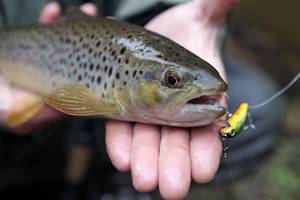
You can use both branded ultralight baits and Chinese ones from Aliexpress. However, you shouldn’t take everything. The peculiarity of China is that before purchasing you cannot be fooled by advertising or pictures - it is better to study reviews for a specific model. An obvious plus is the price. For the cost of one original wobbler you can buy a dozen Chinese ones, and some replicas work no worse than the originals.
In addition to standard wobblers, in ultralight sizes you can find poppers and bladeless ratlins, topwaters (pencils). Surface floats and vibes sometimes save fishing, especially in the summer, when nothing else works.
Article about the right wobblers for ultralight
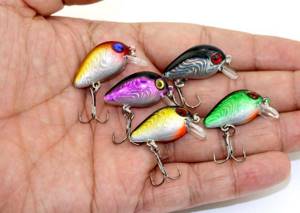
Oscillating spoons (oscillators)
These ultralight baits have less catchability, so they are found quite rarely and in small quantities in the arsenal of spinning anglers (mainly the most working ones, tested by time and catches). However, experts always recommend having a few mini vibrators with you. The thing is that the ultralight vibrator has a rather interesting game at the moment of its fall, forming a cloud of turbidity at the bottom. And in the bottom area, as you know, a company of ides, chubs or trout always gathers.
It is important that in reservoirs with a large current, fishing with oscillating spoons always brings good results, since due to the design features of the bait, it works completely in the current, provoking the fish to attack. As for wiring, it can be very diverse, both monotonous at one speed, and with pauses, twitching of the rod and acceleration.
Japanese vibrators are popular:
- Forest;
- Waterland;
- Their analogues with sizes up to 5.5 cm.
Very often, the depth of the riverbed is significantly less than the depth of the pool; accordingly, the bait in such conditions must be quickly buried and worked either at the moment of falling or when performing the retrieve. It is all these qualities that oscillating spoons have.
Microjig
A separate large direction of ultralight is microjig. Many anglers fish only with such baits, without using spoons or wobblers. Everything used is the same as in a regular jig - twisters, vibrating tails, larvae, crustaceans, worms, slugs, foam fish. Only the weight of jig heads and Cheburashkas, as well as the size of silicones, are selected accordingly for ultralight.
Foam rubber fish for ultralight are usually cut out and painted yourself; there are plenty of silicone baits available for sale for every color and taste. Installation - usual, on a jig head or swivel suspension with an offset hook. Spaced rigs also work - drop-shot, split-shot, drop-shot, Texas and Carolina. This is a matter of experimentation and manipulation on the reservoir with the selection of a catchable option.

Article about fishing with micro jig: link coming soon
Some anglers successfully use jigs instead of jigs. Using an ultralight spinning rod, you can fish both vertically from a boat and by casting, hooking it with silicone or natural bait. Among jigs there are simply many more options of shapes and colors than among jig heads or Cheburashkas. Jig weights of 0.5-5 grams are used, in accordance with the test of the working rod. More information about fishing with spinning jigs
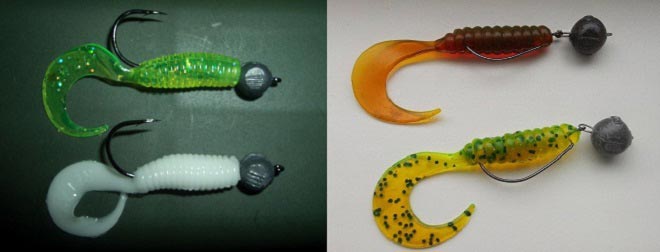
Lures
When shopping in a store, you need to pay attention to the thin and graceful tips of the rod whips, the cross-section of which is about one and a half millimeters. In addition, it is forbidden to avoid checking the fishing rod for flexibility, since when fishing, the load on the fishing line threaded through all the rings is evenly distributed throughout the rod. And this often becomes the cause of breakdown.
It is desirable that the upper section of the rod be without a pronounced seam, which affects the correct distribution of the load during spinning operation. This is checked as follows: take the rod, bend it a little and rotate around its axis. No jumps in hardness should appear visually.
And here's what you need to know: Bake a rocket for fishing with your own hands
Pay attention to the rings, how they are placed, and how the varnish is applied to the fastening points. There should be no unevenness in the application of varnish.
The weak point of such a spinning rod is the tulip; when fishing you need to be especially careful with it. Especially when the spinning rod is taken out of the case or returned to its place.
These ultralight baits include a whole range of well-known twisters, as well as plastic worms, octopus and rippers. Jigs are small in size.
Just like in a regular spinning rod, silicone baits for ultralight are additionally equipped with jig heads of small weight and size. Available with hinged fasteners or offset hooks.
Often used in lead rigs such as “Carolina” or “Texas”.
Jigs are very dependent on the quality of the raw materials from which they are made. After all, we are talking about miniature.
This means that the silicone must be of high quality. And, for example, PVC is a hopelessly hard material, so such a jig is completely useless.
The smallest jigs can be used to catch even bleak and roach – completely “peaceful” fish species. And as the smallest jig heads, you can use a very large jig.
In this case, it is important that when fishing with a rod, the casting was more or less acceptable. But this can only be achieved if the flight and weight characteristics of the bait are sufficient.
Let's say your cast is two meters. With the appropriate characteristics of the bait, it is quite possible to tempt the fish to bite by holding a small streamer.
Or by sending bait in the form of an insect under some bush hanging over the water.
Ultralight allows you to cast not only heavy flies. For example, brainy Italian fishermen came up with “sbirulino”. Do you know what kind of projectile this is? With its help, streamers and almost weightless “flies” are thrown to the required distance without any problems.
Initially, the Italian version was far from the concept of pure spinning (because sbirulino requires a special rod). But our resourceful Russian fishermen successfully combine both gears and literally make them friends. It should be noted that UL baits are constantly being improved, their varieties are replenished with new solutions. Anything that can improve fishing and increase its attractiveness is possible!
They always help out in the hot season, when fish come to the surface of the water in search of food. They are well attacked by pike, chub, asp, roach and perch. They have identical dimensions to minnow wobblers.
- Rapala;
- Megabass;
- Ocuma;
- Shimano.
The craze for ultralight fishing has brought a wide range of affordable baits that can be found on the shelves of our stores. I'll describe some of my "catch" box. Let's start with ultralight budget series lures.
Silicone baits for ultralight
And the first place is occupied, of course, by silicone baits for ultralight. These are small 2 to 4 cm twisters and vibrotails of various colors with jig heads 1-4 g. And it’s not a shame to tear them off, and the fish loves them.
The use of small passive silicone worms will regularly bring white non-predatory fish (roach, bream, silver bream) into your fish tank.
Turntables for ultralight
My second choice is a variety of spinners (popularly known as spinners). I prefer . The sizes of spinners for ultralight range from 00 to 2. You may not believe it, but with size zero spinners I catch bleaks, rudd and other white fish on almost every fishing trip. And I don’t grab it, but I catch it by the mouth.
I recently bought myself a very small pinwheel, 0.09 g. with a fly on a small single hook. I haven’t tried it yet, but I’m sure it will catch like a charm.
Flies and streamers
Ultralight allows you to use flies or streamers. This is especially useful when fishing for chub, sabrefish, grayling, and trout. Both dry and wet fly fishing flies and relatively large and heavy streamers are used. A streamer or a heavy fly of the appropriate weight can be cast simply with a rod.
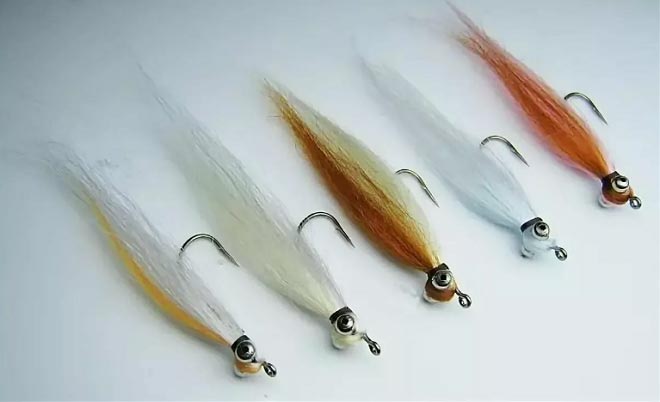
Streamers
Light flies can be mounted on an ultralight class spinning rod using a small bombard weighing 2-3 grams. Typically, bombard fishing is the prerogative of a medium spinning rod or special rods. However, you can also fish this way on ultralight - with Sbirulino floats of the appropriate size and weight.
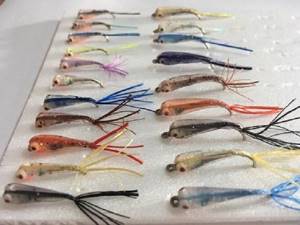
Silicone fry
Combined and homemade baits
If you hang a fly or streamer from a spinner or spinner, you get an ultralight hybrid bait, a fly-spoon. A fly wobbler is also made. Many fishermen do not use store-bought flies, but make their own barbs on their hooks using lint, thread, feathers or Lurex.
You can also hang a small twister on the hook of a spinner or jig - this is an experimental question, limited by the fisherman’s imagination and certain limits of feasibility. Ultralight fishing is a constant creative experiment.
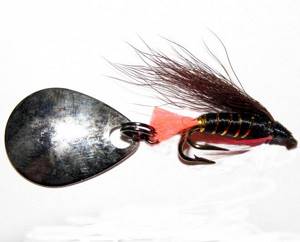
From foam or polyurethane foam you can make an ultra-light resemblance to a mandula for pike perch, only on a single hook. This micromandula works great against predators, especially bersh or perch.
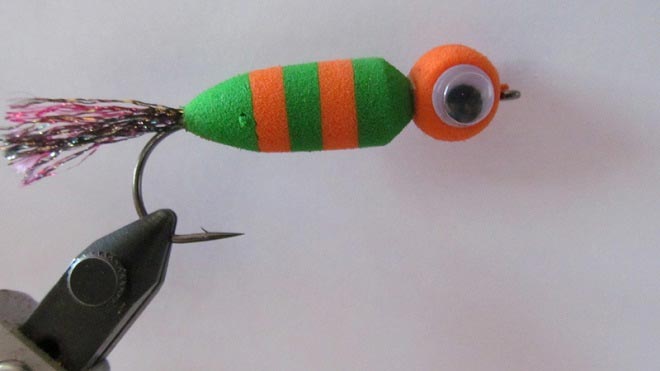
Micromandula
Small spinnerbaits or homemade ultralight baits based on a similar principle are also suitable. With proper ingenuity, an additional micro-petal can be hung on any bait.
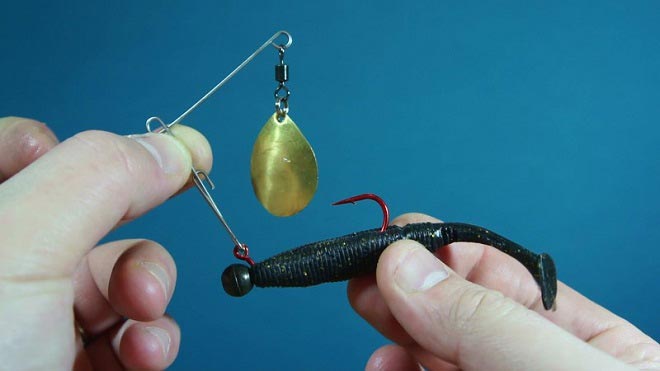
Recently, anglers have begun to use hard plastic epoxy baits, also made with their own hands at home. Compared to store-bought silicone sponges, epoxy resin fry are resistant to pike teeth and other damage. Most often perch is caught with such baits, but other fish also take them.
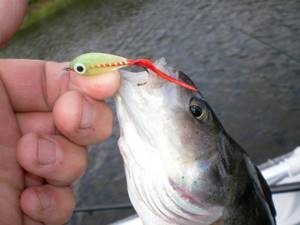
Video about homemade epoxy fry:
Subscribe to the channel:
YouTube channel RYBAFAN
We are VKontakte
Advantages of ultralight
Ultralight has many advantages : – Phenomenal catchability, regardless of the time of year, weather factors and fishing conditions. – The widest range of ultra-light baits. – High fishing dynamics, sportiness and excitement. – Availability and prevalence of gear for UL-a.
To successfully fish with ultralight, an angler needs to acquire balanced gear and a set of baits. The modern fishing market is saturated with rods and reels designed for ultra-light fishing. Their choice will be discussed below.
